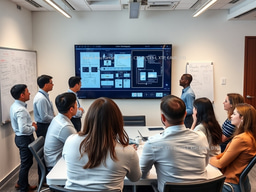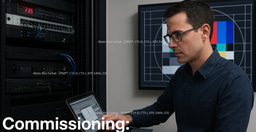Sound Reinforcement Systems: A Deep Dive from Experience

A few years back, I routed into the core of Sound Reinforcement System, long before immersive audio and networked DSPs were industry buzzwords. Back then, it started with simple setups: analog mixers, passive speakers and a lot of trial and error with EQ.
But over time, I realized sound reinforcement isn't just about making things louder, t's about delivering intelligibility, coverage, consistency and emotional impact. It’s where engineering meets art.
Here’s a more structured look into what makes up a professional Sound Reinforcement System today and why every component matters.
Fundamentals of a Professional SRS Architecture
1. Input Transducers:
-
Microphones (Dynamic, Condenser, RF Mics)
-
DI Boxes (Active/Passive for instruments)
These are the entry points of your signal chain. Their quality and placement influence the entire system.
2. Mixing Console – The Command Center:
-
Analog vs Digital: Analog is tactile, digital is flexible.
-
Modern consoles (Yamaha CL/QL, A&H dLive, Avid S6L) allow dynamic routing, layer management, snapshot recall and multitrack recording.
-
Key features: preamp control, EQ, compression, matrix routing and remote access.
3. Signal Processing – The System's Brain:
-
Loudspeaker management via DSPs (QSC, Biamp, BSS)
-
Functions: Crossover alignment, FIR filters, delay zones, dynamic range control
-
Integration with AV control (e.g., Crestron/Q-SYS scripting)
4. Loudspeakers – Your System’s Voice:
-
Line Arrays for long-throw, even coverage (L-Acoustics, Meyer, d&b)
-
Point Source and Column Speakers for compact spaces
-
Subwoofers: Cardioid and end-fired configurations for controlled low-end
5. Amplification – Precision Power Delivery:
-
Class D amplifiers dominate for efficiency
-
Networked amplifiers (Dante/AES67-ready) enable remote monitoring and fault alerts
6. Wireless Systems – RF Management is a Skill:
-
Coordinated frequencies using Shure WWB or WSM
-
Antenna distribution, RF over fiber and passive splitters
-
Diversity reception for dropout-free performance
7. Digital Networking & Control:
-
Dante, AVB, AES67: Interoperability in AV
-
Remote monitoring, gain structure, routing and system snapshots
-
Custom GUIs via Q-SYS, Symetrix ARC or AMX/Crestron,etc.
📏 8. Acoustic Design & Modeling:
-
EASE, L-Acoustics Soundvision, JBL DDA and d&b ArrayCalc
-
Objectives: STI > 0.6, ±3 dB coverage, RT60 control
-
Acoustic treatment planning: absorption, diffusion, isolation
9. Redundancy & System Resilience:
-
UPS backup, redundant DSP paths, failover amplifiers
-
Critical for large venues, mission-critical events and broadcast
Where This Knowledge Applies:
-
Stadiums & Arenas: Delay zones, array steering
-
Theatres & Performing Arts: Quiet gain, scene-based automation
-
Auditoriums & Lecture Halls: Vocal clarity, gain-before-feedback
-
Houses of Worship: Emotional impact with intelligibility
-
Touring & Events: Fly-rig efficiency, consistent rig tuning
-
Corporate: Speech-focused reinforcement with minimal visual impact
My Takeaway from the Journey:
When I look back, what’s evolved is not just the technology, but the mindset. We now approach sound as a system, not a stack of gear. And the goal is always the same: faithfully reproduce what the performer or speaker intends, with zero distractions.
A well-executed SRS isn’t just heard—it’s felt.
Key Metrics We Should Always Aim For:
-
SPL Uniformity: ±3 dB across the audience
-
Intelligibility (STI): ≥ 0.6 in critical zones ( 0.55 is acceptable is some standards)
-
Latency: < 10 ms end-to-end for speech-based systems
-
Redundancy: Failover paths for mission-critical installs
-
Clarity, Coverage, Control – The golden triangle of audio design.
What’s one critical lesson you've learned ? technically or practical, while designing or deploying a Sound Reinforcement System?
Whether you're a consultant, integrator or just starting in AV, a deep understanding of sound reinforcement will set the foundation for delivering reliable, powerful audio experiences.
Let’s share and elevate each other’s practice !
-
Xchange Advocates are recognized AV/IT industry thought leaders and influencers. We invite you to connect with them and follow their activity across the community as they offer valuable insights and expertise while advocating for and building awareness of the AV industry.
Recommended Content
LetsTalkAVbyAlexis Series: Episode 4 : Design Begins With People: Engineering AV Systems Around Real End-User Requirements

LetsTalkAVbyAlexis Series : Episode 2: Network & AV Convergence (AVoIP)





Please sign in or register for FREE
If you are a registered user on AVIXA Xchange, please sign in